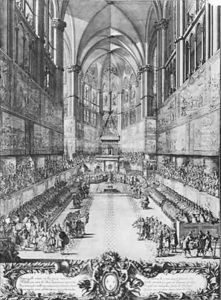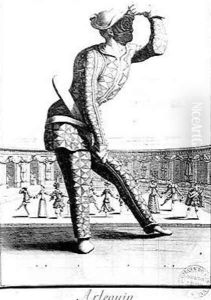Antoine Le Pautre Paintings
Antoine Le Pautre was a prominent French architect and engraver, born in Paris in 1621. He was the brother of the sculptor and designer Jean Le Pautre and the architect Pierre Le Pautre, making creativity and artistry a family trait. Antoine's contributions to French architecture during the 17th century were significant, particularly during the reign of Louis XIV, where he became a key figure in the early development of the French Classical style. His work is characterized by its elaborate detail, grandeur, and the integration of classical elements, which were innovative at the time and influential in shaping the direction of French architecture.
Le Pautre's education and training in architecture were comprehensive, deeply influenced by the prevailing French and Italian architectural trends. Early in his career, he gained the patronage of important figures at the French court, including Cardinal Richelieu. This patronage allowed him to work on a variety of projects, ranging from private residences to religious and public buildings. Among his notable works is the Hôtel de Beauvais, located in the Marais district of Paris, which showcases his mastery of space and decorative elements, and the Chapel of the Virgin in the Church of Saint-Roch, Paris, which reflects his skill in religious architecture.
Le Pautre was also an accomplished engraver, and his engravings of architectural designs were widely circulated, influencing architects and designers in France and across Europe. His engravings not only served as a record of his own designs but also facilitated the spread of the French Classical style beyond the borders of France.
Despite his success, Antoine Le Pautre's contributions have sometimes been overshadowed by those of his contemporaries, such as Louis Le Vau and François Mansart, and later by Jules Hardouin-Mansart, the architect of Versailles. Nonetheless, his work remains an important part of the canon of French architecture, representing a bridge between the Baroque and Classical styles. Le Pautre died in Paris in 1679, leaving behind a legacy of architectural innovation and a significant body of work that continues to be studied and admired for its elegance and historical value.

